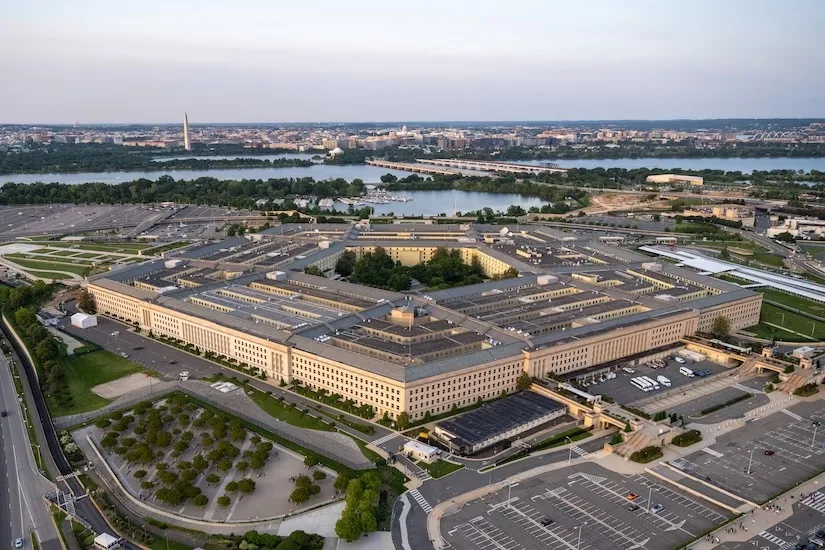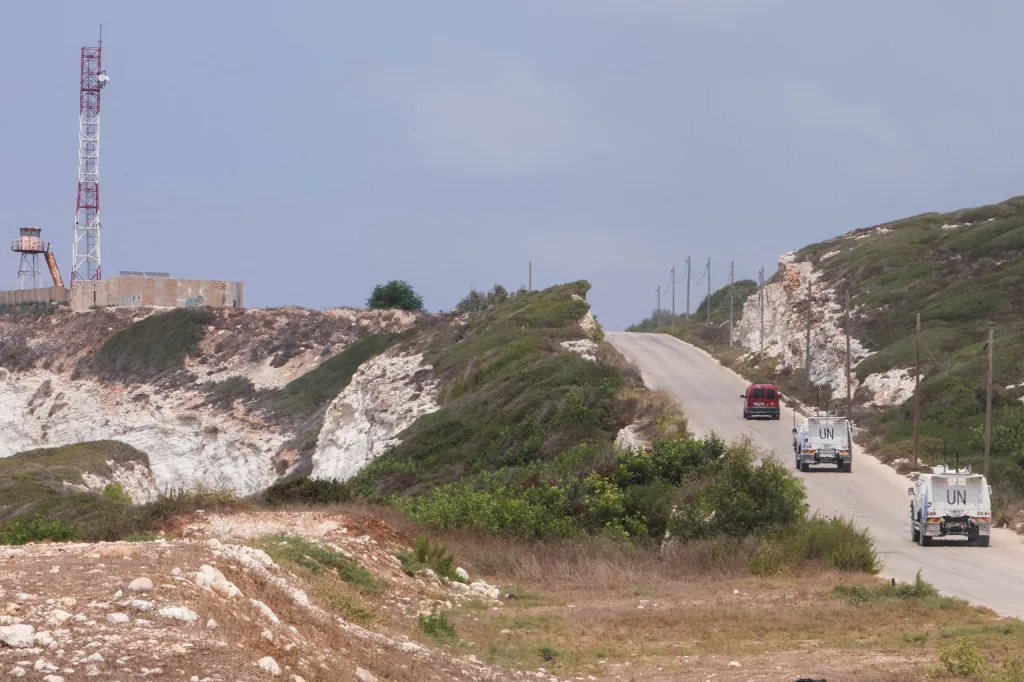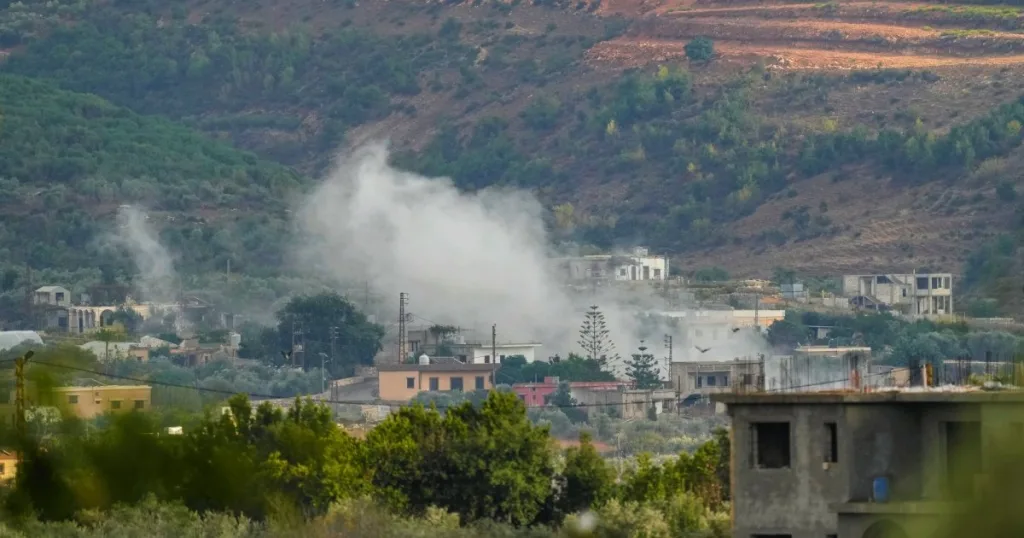Hezbollah’s Dilemma: As anticipated, the United States has initiated a significant offensive against Iranian proxies in Syria and Iraq. Yesterday witnessed a barrage of strikes hitting 85 locations, effectively decimating 85 centers affiliated with Iran’s proxy entities. While casualty figures remain undisclosed, the toll undoubtedly includes civilian lives amidst the destruction. This relentless assault poses a formidable challenge for Hezbollah operatives stationed in Syria. Unlike past Israeli strikes, which primarily targeted Hezbollah’s South Syrian offices, this onslaught encompasses a broader array of targets, impacting thousands of Hezbollah guerrillas in Northern Syria and their numerous facilities.

Table of Contents
Escalation: America’s Offensive in Syria and Iraq
Iran’s proxies predominantly consist of Iraqi nationals, with funding and weaponry flowing from Iran while the manpower remains local. Notably, Hezbollah’s presence in Syria is diminished, with some operatives retreating to safe havens or returning to Iran. However, not all have fled, and with the prior intelligence alerting Iran to America’s plans, the repercussions are substantial. The US has dealt a severe blow, forcing the abandonment of 85 warehouses housing drones, missiles, and other armaments. The rapid evacuation amidst chaos underscores the magnitude of the losses incurred.
Impact on Hezbollah: Assessing the Fallout
Historically, Israel focused its attacks on Hezbollah’s offices in South Syria, which were limited in number. However, the landscape has evolved, with thousands of Hezbollah guerrillas now stationed in northern Syria, operating from numerous centers. The recent U.S. strikes have left a trail of destruction, forcing Iranian forces and Hezbollah soldiers to retreat to safer locations or return to Iran.

Iranian proxies in Iraq, primarily consisting of local volunteers and guerrillas, faced a similar predicament. The intelligence report received by Iran three days prior prompted their departure, minimizing the loss of life. The extensive damage inflicted during the attacks, particularly on storage facilities for drones, has hindered their operations.
The US announcement indicates a sustained campaign, leaving Hezbollah with limited options for regrouping in Syria or establishing new bases in Iraq. American intelligence infrastructure, coupled with extensive military presence in both countries, complicates any reassembly efforts by Hezbollah or its affiliates.
Iran’s Response: Retreat or Retaliation?
The U.S. announcement signals a commitment to sustained and phased attacks. This implies that Hezbollah faces challenges in returning to Syria or establishing new bases in Iraq. Large U.S. bases in both countries, equipped with advanced weaponry and surveillance systems, pose formidable obstacles to Hezbollah’s rebuilding efforts.
The attacks, involving a combination of drones, fighter jets, bombers, and missiles, have created a lasting deterrent. The unpredictability of these strikes leaves Hezbollah in a perpetual state of vulnerability, disrupting any plans for new bases.
The recent offensive, utilizing a combination of drones, fighter jets, bombers, and missiles, serves as a deterrent to both Iran and Syria’s Hezbollah, altering the dynamics of engagement in the region. No longer confined to sporadic attacks, the continuous and varied strikes have rendered Hezbollah’s prospects for reestablishment bleak.
Regional Ramifications: Targets and Tensions
Iran, in response to the attacks, declared its commitment to refrain from targeting any American interests. This retreat, withdrawal, and attempt to avoid further escalation underscore internal divisions within Iran. While some advocate for silence on recent developments, others insist on targeting American interests under their control, citing the significant number of U.S. bases in Syria and Iraq as potential targets.

As speculation surrounds Iran’s response, recent declarations signal a retreat from aggression, advocating a cessation of hostilities against American interests. However, internal divisions within Iran cast uncertainty on the trajectory of their actions.
Cyber Threats and Global Connectivity
The evolving geopolitical landscape extends beyond physical attacks. The Houthis, based in North Yemen, have issued a threat to cut the internet, plunging the world into darkness. The enormity of this threat lies in the potential paralysis of the global banking system and essential services dependent on the internet.
Despite the gravity of the warning, practical challenges, such as the lack of submarines, diminish the feasibility of this cyber threat.
Gaza’s Turmoil: Shifting Control and Ceasefire Efforts
Shifting our focus to Gaza, recent developments indicate a significant change in control. Northern and central Gaza have returned to Hamas control, prompting the complete withdrawal of the Israeli army. However, southern Gaza remains a focal point for potential conflict, particularly in the Rafah area. The toll on Israel has been substantial, with damaged tanks, injured soldiers, and a paralyzed military.

Efforts to broker a ceasefire are underway, reflecting the desire for a resolution. The Gazans demand a permanent ceasefire from Israel, hinting that the conflict may conclude within the month.
Conclusion: Navigating a Complex Geopolitical Landscape
Hezbollah’s dilemma unfolds amid the aftermath of U.S. attacks, presenting challenges for its operations in Syria and Iraq. The geopolitical landscape involves a delicate balance of military actions, cyber threats, and regional power dynamics. As the situation continues to evolve, the world watches closely, awaiting the resolution of conflicts and the restoration of stability in the affected regions. For more information, so please visit this link.
Frequently Asked Questions (FAQs) about Hezbollah’s Dilemma
1. What is Hezbollah’s role in the recent conflict in Syria and Iraq?
Hezbollah, an Iranian-backed militant group, has been actively involved in supporting Syrian President Bashar al-Assad’s regime and combating opposition forces in Syria. In Iraq, Hezbollah has also played a significant role in supporting Iranian interests and combating ISIS.
2. How has the United States responded to Hezbollah’s presence in Syria and Iraq?
The United States has launched a series of devastating attacks targeting Iranian proxies, including Hezbollah, in Syria and Iraq. These attacks aim to disrupt Hezbollah’s operational capabilities and prevent its re-establishment in the region.
3. What are the implications of the recent attacks on Hezbollah’s operations?
The attacks have resulted in significant damage to Hezbollah’s infrastructure and have forced Iranian and Hezbollah forces to retreat from Syria and Iraq. This has severely hampered Hezbollah’s ability to operate in the region and poses significant challenges for its future activities.
4. What is Iran’s response to the attacks on Hezbollah?
Iran’s response has been mixed, reflecting internal divisions within the Iranian leadership. While some advocate for restraint and avoidance of further escalation, others call for retaliatory action against American interests in the region.
5. What role do cyber threats play in the current conflict?
Groups like the Houthis have issued threats of cyber attacks, including internet disruptions, as part of their response to the conflict. However, practical challenges, such as limited resources and capabilities, limit the feasibility of such threats.
6. What is the current situation in Gaza, and how does it relate to the broader conflict?
Gaza has experienced a change in control, with Hamas regaining authority in northern and central Gaza. Efforts to broker a ceasefire are underway, reflecting the desire for a resolution to the ongoing hostilities in the region.
7. How can the international community contribute to resolving the conflict in Syria, Iraq, and Gaza?
The international community must remain vigilant and actively seek diplomatic solutions to de-escalate tensions and promote stability in the affected regions. Through concerted efforts, lasting peace can be achieved in the Middle East.

